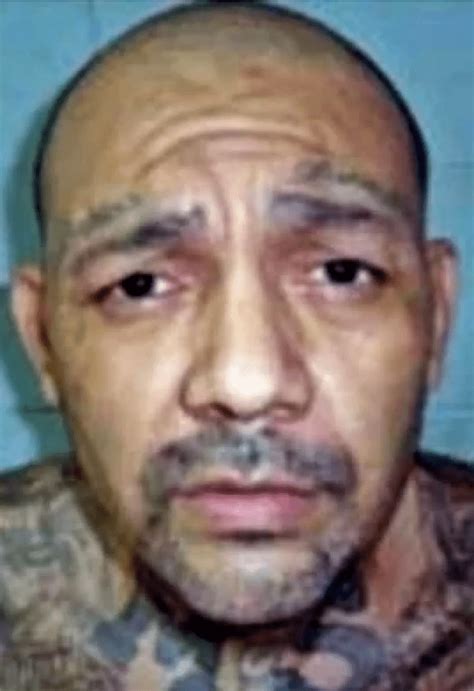
A confidential FBI informant was murdered in broad daylight in South Los Angeles while on a recorded call with his handler, marking a brazen act of violence allegedly committed by MS-13 gang members.
The informant, whose identity has not been publicly released, was providing information to the FBI about MS-13 activities when the attack occurred. According to law enforcement sources, the informant was ambushed and fatally shot, with the entire incident captured on the recording. The killing underscores the escalating violence and boldness of MS-13 in the region.
The Los Angeles Police Department (LAPD) is investigating the murder, with the FBI providing support and resources. “We are deeply saddened by the loss of a courageous individual who was working with us to combat gang violence,” stated an FBI spokesperson, emphasizing the agency’s commitment to bringing the perpetrators to justice.
The incident has raised serious concerns about the safety of informants and the challenges faced by law enforcement in combating MS-13, a transnational criminal organization known for its brutality and reach.
The Ambush and the Recorded Call
Details surrounding the informant’s murder are chilling. The informant was actively engaged in a phone call with his FBI handler, relaying information about MS-13 operations, when the attack commenced. The recorded call captured the sounds of the assault, including gunshots and the informant’s final moments. Law enforcement officials have described the recording as crucial evidence in the ongoing investigation.
“The fact that this happened while the informant was actively cooperating with the FBI is a clear indication of MS-13’s audacity,” said a former law enforcement official familiar with the case. “They are sending a message that no one is safe, regardless of whether they are working with law enforcement.”
The location of the murder, a busy street in South Los Angeles, further highlights the gang’s brazenness. The attack occurred in broad daylight, suggesting a calculated risk and a disregard for potential witnesses. The LAPD has increased patrols in the area and is working to gather additional evidence, including surveillance footage and witness statements.
MS-13: A Transnational Threat
MS-13, also known as Mara Salvatrucha, is one of the most notorious and violent gangs in the world. Originating in Los Angeles in the 1980s, the gang has spread throughout the United States, Central America, and other parts of the world. MS-13 is known for its ruthless tactics, including murder, extortion, drug trafficking, and human smuggling.
The gang’s structure is decentralized, with various cliques operating independently but often coordinating activities. MS-13’s membership is estimated to be in the tens of thousands, with a significant presence in Southern California, particularly in Los Angeles County.
“MS-13 poses a significant threat to public safety,” said a Department of Justice official. “They are a violent and ruthless organization that preys on vulnerable communities. We are committed to working with our law enforcement partners to disrupt and dismantle MS-13’s operations.”
The gang’s activities extend beyond criminal enterprises, often involving intimidation and violence against community members. MS-13 seeks to establish control over neighborhoods, using fear as a tool to maintain power and silence potential witnesses.
The Role of Informants in Combating Gang Violence
Informants play a critical role in law enforcement efforts to combat gang violence. These individuals, often former or current gang members, provide valuable information about gang activities, including planned attacks, drug trafficking operations, and the identities of key members.
However, working as an informant is inherently dangerous. Informants face the risk of retaliation from gang members if their cooperation with law enforcement is discovered. Law enforcement agencies take measures to protect informants, including providing relocation assistance and security details.
“Informants are essential to our efforts to combat gang violence,” said a former FBI agent. “They provide us with inside information that we would not otherwise be able to obtain. We must do everything we can to protect them and ensure their safety.”
The murder of the FBI informant in South Los Angeles underscores the risks faced by those who choose to cooperate with law enforcement. It also raises questions about the adequacy of protection measures for informants and the need for enhanced strategies to safeguard their well-being.
Community Impact and Response
The murder has sent shockwaves through the South Los Angeles community, which has long been affected by gang violence. Residents express fear and frustration, calling for increased law enforcement presence and community-based initiatives to address the root causes of gang involvement.
“We are tired of living in fear,” said a community leader. “We need more resources for our youth, more job opportunities, and more support for families. We cannot allow gang violence to continue to plague our community.”
Local organizations are working to provide support to affected families and to promote violence prevention programs. These programs focus on mentoring, education, and job training, aiming to provide young people with alternatives to gang involvement.
The LAPD is also working to strengthen its relationship with the community, holding town hall meetings and community events to build trust and foster collaboration. Law enforcement officials emphasize the importance of community involvement in combating gang violence.
Legal and Investigative Challenges
The investigation into the informant’s murder presents numerous legal and investigative challenges. Law enforcement officials must gather evidence, identify suspects, and build a case that can withstand legal scrutiny.
The recorded phone call is a crucial piece of evidence, but investigators must also gather additional evidence to corroborate the recording and identify the perpetrators. This may involve analyzing surveillance footage, interviewing witnesses, and conducting forensic analysis of the crime scene.
Prosecutors will face the challenge of proving beyond a reasonable doubt that the suspects are responsible for the murder. This may require presenting testimony from witnesses, experts, and law enforcement officials.
The case may also involve issues of witness protection, as individuals who come forward to provide information may face the risk of retaliation from MS-13. Law enforcement officials must take measures to protect witnesses and ensure their safety.
Political and Policy Implications
The murder has sparked renewed debate about the effectiveness of current strategies to combat gang violence. Some policymakers are calling for increased funding for law enforcement, while others are advocating for a greater focus on prevention and intervention programs.
“We need to get tough on gangs,” said a member of Congress. “We need to provide law enforcement with the resources they need to arrest and prosecute gang members. We also need to secure our borders to prevent gang members from entering the country.”
Other policymakers argue that a more comprehensive approach is needed, one that addresses the root causes of gang involvement, such as poverty, lack of education, and lack of opportunity.
“We cannot simply arrest our way out of this problem,” said a city council member. “We need to invest in our communities and provide young people with the resources they need to succeed. We need to create a society where gang involvement is no longer an attractive option.”
The murder has also raised questions about the role of the federal government in combating gang violence. Some are calling for increased federal funding for local law enforcement agencies, while others are advocating for a more coordinated national strategy to address the problem.
The Future of the Investigation and the Fight Against MS-13
The investigation into the informant’s murder is ongoing, and law enforcement officials are committed to bringing the perpetrators to justice. The FBI is providing support to the LAPD, and federal prosecutors are prepared to prosecute the case if necessary.
The murder serves as a stark reminder of the challenges faced by law enforcement in combating MS-13. The gang’s violence and reach make it a formidable adversary, and law enforcement agencies must continue to adapt their strategies to effectively address the threat.
“We will not be intimidated by MS-13,” said the FBI spokesperson. “We will continue to work with our law enforcement partners to disrupt and dismantle their operations. We will bring them to justice for their crimes.”
The fight against MS-13 will require a multi-faceted approach, involving law enforcement, community organizations, and policymakers. It will also require a sustained commitment to prevention and intervention programs, as well as efforts to address the root causes of gang involvement.
The murder of the FBI informant in South Los Angeles is a tragedy, but it also serves as a call to action. It is a reminder that gang violence is a serious problem that requires a comprehensive and sustained response.
Frequently Asked Questions (FAQ)
-
What happened in South Los Angeles?
- A confidential FBI informant was murdered in South Los Angeles while on a recorded phone call with his FBI handler. The informant was providing information about MS-13 gang activities when he was ambushed and fatally shot.
-
Who is believed to be responsible for the murder?
- Law enforcement officials believe that MS-13 gang members are responsible for the murder. The act is seen as a brazen display of violence and a message to anyone cooperating with law enforcement.
-
Why was the informant working with the FBI?
- The informant was providing information to the FBI about MS-13 activities, including details about their operations, planned attacks, and key members. Informants are crucial in helping law enforcement combat gang violence.
-
What is MS-13?
- MS-13, also known as Mara Salvatrucha, is a transnational criminal gang that originated in Los Angeles in the 1980s. It is known for its extreme violence and involvement in various criminal activities, including murder, extortion, drug trafficking, and human smuggling.
-
What is being done to address the situation?
- The LAPD is investigating the murder with support from the FBI. Law enforcement has increased patrols in the area and is gathering evidence. Community organizations are working to support affected families and promote violence prevention programs. Policymakers are debating the effectiveness of current strategies and considering increased funding for law enforcement and community-based initiatives.
Detailed Background on MS-13’s Activities in Los Angeles
MS-13’s presence in Los Angeles is deeply rooted, tracing back to the influx of Salvadoran immigrants during the civil war in El Salvador in the 1980s. Initially formed as a means of self-protection against other established gangs, MS-13 quickly evolved into a ruthless criminal enterprise. Their activities in Los Angeles encompass a wide range of offenses, creating an atmosphere of fear and instability in affected communities.
One of the gang’s primary activities is extortion, targeting local businesses and residents. These “taxes” demanded by MS-13 can cripple businesses and force residents into poverty, creating a cycle of dependence and fear. Businesses that refuse to pay are often subjected to vandalism, threats, and even violence, making compliance almost inevitable.
Drug trafficking is another significant revenue stream for MS-13 in Los Angeles. The gang controls various distribution networks, moving drugs like methamphetamine, cocaine, and heroin throughout the city and beyond. This drug trade fuels addiction, violence, and other related crimes, further destabilizing communities.
Human smuggling is also a growing concern, with MS-13 exploiting vulnerable individuals seeking to cross borders. The gang often charges exorbitant fees for their services, subjecting migrants to dangerous conditions and exploitation. In some cases, MS-13 forces migrants into servitude or prostitution to pay off their debts, perpetuating a cycle of abuse.
Beyond these core criminal activities, MS-13 is known for its brutal acts of violence. Murder, assault, and intimidation are common tactics used to maintain control and enforce their will. The gang’s reputation for extreme violence is a key component of their power, instilling fear in the community and discouraging cooperation with law enforcement.
The Impact on Local Businesses and Residents
The presence of MS-13 in South Los Angeles has a devastating impact on local businesses and residents. Businesses struggle to survive under the constant threat of extortion and violence, while residents live in fear of becoming victims of the gang’s criminal activities.
Many small businesses in the area are owned by immigrants who are particularly vulnerable to exploitation. MS-13 often targets these businesses, knowing that the owners may be less likely to report the crimes to law enforcement due to language barriers, fear of deportation, or a lack of trust in the authorities.
Residents are forced to live under a constant cloud of fear, afraid to walk the streets at night or allow their children to play outside. The gang’s presence creates a sense of isolation and despair, making it difficult for communities to thrive.
The Role of Law Enforcement in Combating MS-13
Law enforcement agencies in Los Angeles County, including the LAPD and the FBI, are actively working to combat MS-13. These agencies employ a variety of strategies, including:
- Targeted Enforcement: Focusing resources on areas with high levels of MS-13 activity, conducting raids, and arresting gang members.
- Intelligence Gathering: Using informants and other sources to gather information about the gang’s activities, structure, and membership.
- Community Policing: Building relationships with community members to foster trust and encourage cooperation with law enforcement.
- Prosecution: Working with prosecutors to bring gang members to justice and secure convictions for their crimes.
- Multi-Agency Collaboration: Coordinating efforts with other law enforcement agencies at the local, state, and federal levels to share information and resources.
Despite these efforts, combating MS-13 remains a significant challenge. The gang’s decentralized structure, transnational connections, and willingness to use violence make it difficult to disrupt their operations. The murder of the FBI informant underscores the risks faced by those who cooperate with law enforcement and highlights the need for enhanced protection measures.
The Importance of Community Involvement
Law enforcement officials recognize that they cannot combat MS-13 alone. Community involvement is essential to breaking the cycle of gang violence and creating safer neighborhoods.
Community-based organizations play a vital role in providing support to vulnerable individuals and families, offering alternatives to gang involvement, and promoting positive community development. These organizations often provide:
- Mentoring Programs: Pairing at-risk youth with positive role models who can provide guidance and support.
- Educational Programs: Offering tutoring, GED classes, and other educational opportunities to help young people succeed in school.
- Job Training Programs: Providing job skills training and placement assistance to help individuals find employment.
- Counseling Services: Offering individual and group counseling to help individuals cope with trauma, addiction, and other challenges.
- Violence Prevention Programs: Educating young people about the dangers of gang violence and promoting peaceful conflict resolution.
By working together, law enforcement, community organizations, and residents can create a stronger, more resilient community that is less vulnerable to the influence of MS-13.
The Need for Long-Term Solutions
Combating MS-13 requires a long-term commitment to addressing the root causes of gang involvement. This includes:
- Poverty Reduction: Creating economic opportunities and reducing income inequality to provide individuals with a pathway out of poverty.
- Educational Reform: Improving schools and increasing access to quality education to help young people succeed in school and beyond.
- Housing Affordability: Providing affordable housing options to reduce homelessness and overcrowding.
- Mental Health Services: Increasing access to mental health services to address trauma, addiction, and other mental health issues.
- Community Development: Investing in community infrastructure and amenities to create safer, more vibrant neighborhoods.
By addressing these underlying issues, we can create a society where gang involvement is no longer an attractive option and where all individuals have the opportunity to thrive.
The Legal Ramifications of Aiding and Abetting Gang Activity
The legal consequences for individuals who knowingly aid and abet gang activity are severe. These consequences are designed to deter individuals from supporting gangs and to hold them accountable for their actions. Aiding and abetting can take many forms, including:
- Providing Material Support: Supplying gangs with weapons, drugs, money, or other resources.
- Harboring Gang Members: Providing shelter or hiding places for gang members who are wanted by law enforcement.
- Assisting in Criminal Activities: Helping gang members plan or carry out crimes.
- Intimidating Witnesses: Threatening or intimidating witnesses to prevent them from cooperating with law enforcement.
Individuals who are convicted of aiding and abetting gang activity can face lengthy prison sentences, fines, and other penalties. They may also be subject to civil lawsuits, which can result in significant financial damages.
The Role of Technology in Gang Activity and Law Enforcement Efforts
Technology plays an increasingly significant role in both gang activity and law enforcement efforts to combat it. Gangs use technology to:
- Communicate with each other: Using encrypted messaging apps and social media platforms to coordinate activities and avoid detection by law enforcement.
- Recruit new members: Using social media to target vulnerable young people and recruit them into the gang.
- Promote their image: Using social media to glorify gang violence and intimidate rivals.
- Track rivals and potential victims: Using GPS tracking devices and social media to monitor the movements of their enemies.
- Engage in cybercrime: Using computers and the internet to commit fraud, identity theft, and other cybercrimes.
Law enforcement agencies are also using technology to combat gang activity, including:
- Data analysis: Using data analytics to identify patterns and trends in gang activity.
- Surveillance: Using surveillance cameras and other technologies to monitor gang members and their activities.
- Social media monitoring: Monitoring social media platforms to identify gang activity and gather intelligence.
- Cybercrime investigations: Investigating cybercrimes committed by gang members.
- Forensic analysis: Using forensic analysis to recover evidence from computers and other electronic devices.
The use of technology by both gangs and law enforcement is constantly evolving, requiring law enforcement agencies to stay ahead of the curve and adapt their strategies accordingly.
The Importance of Addressing Trauma and Mental Health
Trauma and mental health issues are significant factors in gang involvement. Many gang members have experienced trauma in their lives, such as abuse, neglect, violence, or loss. This trauma can lead to mental health problems, such as depression, anxiety, PTSD, and substance abuse.
These mental health problems can make individuals more vulnerable to gang recruitment and can contribute to their involvement in gang violence. Addressing trauma and mental health issues is therefore essential to preventing gang involvement and rehabilitating gang members.
This can be achieved through:
- Increased access to mental health services: Providing affordable and accessible mental health services to individuals and families in affected communities.
- Trauma-informed care: Training professionals to provide trauma-informed care that recognizes the impact of trauma on individuals’ lives.
- Community-based support groups: Creating community-based support groups where individuals can share their experiences and receive support from others who have experienced similar trauma.
- Early intervention programs: Implementing early intervention programs to identify and address trauma and mental health issues in children and adolescents.
By addressing trauma and mental health issues, we can help individuals heal from their past experiences and build healthier, more fulfilling lives, reducing their vulnerability to gang involvement.
The Ongoing Struggle and the Path Forward
The murder of the FBI informant in South Los Angeles is a stark reminder of the ongoing struggle against MS-13 and the challenges faced by law enforcement and communities alike. While the task is daunting, a comprehensive and sustained approach that combines targeted enforcement, community involvement, and long-term solutions is essential. By addressing the root causes of gang involvement, providing support to vulnerable individuals and families, and fostering strong partnerships between law enforcement and the community, we can create safer and more resilient neighborhoods where everyone has the opportunity to thrive. The path forward requires unwavering commitment, collaboration, and a belief in the power of community to overcome adversity. The death of the informant, while tragic, must serve as a catalyst for renewed efforts and a strengthened resolve to combat gang violence and build a better future for all.









